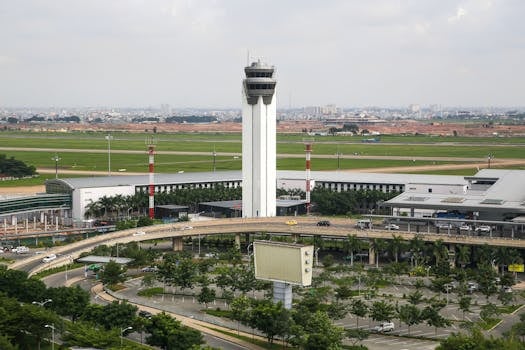Sky Lanes: Urban Air Traffic Management Systems
The skies above major cities are filled with a constant flow of air traffic. With hundreds of planes taking off, landing and navigating between busy airports, safely managing this complex system is critical. To efficiently manage this air traffic, urban areas have turned to advanced technology solutions, and one such solution is the Sky Lanes urban air traffic management system. In this article, we will explore the capabilities and benefits of this innovative system.
The Need for Urban Air Traffic Management Systems
The rapid growth of air travel has led to an increase in air traffic, making it essential to have a robust air traffic management system in urban areas. As populations continue to grow, the demand for air travel also increases, resulting in overcrowded skies. Without proper management, this can lead to delays, risks, and accidents, which can be disastrous.
Traditional air traffic management systems have been effective in guiding planes through designated routes, but they are not efficient enough to handle the dynamic and complex airspace above urban areas. This is where the Sky Lanes urban air traffic management system comes in.
What is Sky Lanes?
Sky Lanes is a state-of-the-art air traffic management system specifically designed for urban areas. It is an automated, intelligent system that integrates multiple technologies to provide effective and safe air traffic management. Sky Lanes is not just software; it is a complete solution that includes ground equipment, satellite technology, and advanced data communication systems.
The Sky Lanes system was developed by a team of experts with decades of experience in the aviation industry. It is currently being used in several major cities worldwide, including New York City, London, and Tokyo, and has proven to be a game-changer in managing airspace in these busy areas.
How Does Sky Lanes Work?
The Sky Lanes system uses a combination of technologies to optimize air traffic flow and ensure safe and efficient operations. It begins with the creation of designated routes and airspace sectors that planes will follow. These routes are carefully planned to avoid congested areas, reduce flight time, and minimize fuel consumption.
To ensure precise tracking of planes, Sky Lanes utilizes advanced satellite technology. This allows controllers to monitor each aircraft’s exact position in real-time, even in areas with no radar coverage. The system also uses advanced data communication systems to exchange information between planes and controllers seamlessly.
Sky Lanes also integrates predictive analytics to anticipate potential conflicts between planes and propose alternative routes to avoid them proactively. This feature significantly reduces the workload of controllers and ensures safe and efficient air traffic flow.
The Benefits of Sky Lanes
The implementation of Sky Lanes brings numerous benefits to urban air traffic management, some of which include:
Improved Safety
With Sky Lanes, controllers have real-time information about each aircraft’s position, reducing the risk of collisions. The predictive analytics feature also helps anticipate potential conflicts, further enhancing the safety of air travel.
Increased Efficiency
Sky Lanes’ optimized routes and airspace sectors reduce congestion and flight time, resulting in more efficient operations. This means fewer delays and lower fuel consumption, which is not only beneficial for airlines but also reduces the environmental impact of air travel.
Reduced Workload for Controllers
By automating certain tasks and providing more accurate and timely information, Sky Lanes reduces the amount of work for air traffic controllers. This allows them to focus on critical tasks and make more informed decisions.
Cost Savings
Sky Lanes is designed to be cost-effective and provides a significant return on investment. The system’s efficiency and streamlined operations result in cost savings for airlines, which can then be passed on to customers.
Conclusion
Sky Lanes is revolutionizing urban air traffic management with its advanced technology and capabilities. With its impressive track record, it is clear that this system is the future of air traffic management in major cities. By ensuring safety, efficiency, and cost savings, Sky Lanes is making air travel safer and more convenient than ever before.









